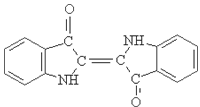Exploring the Art and Science of Indigo Fabric Dyeing Techniques and Their Cultural Significance
The Art and Science of Indigo Fabric Dyeing
Indigo fabric dyeing is a time-honored tradition that dates back thousands of years, cherished for its deep, rich blue hues and cultural significance. The process of indigo dyeing is not just about the color; it embodies a fascinating interplay of art, chemistry, and history, each bottle of dye telling stories of artisans and communities around the world.
Indigo, derived from the plant Indigofera, is one of the oldest dyes known to humanity. Its use can be traced back to ancient civilizations in Egypt, India, and China. What sets indigo apart from many other dyes is that it is insoluble in water. To dye fabric with indigo, the process involves a series of steps that transform the indigo leaves into a water-soluble form through fermentation and chemical reactions, making it ready for dyeing.
The Art and Science of Indigo Fabric Dyeing
One of the most enchanting aspects of indigo dyeing is its unpredictability. Each piece of fabric is unique, and variations in timing, temperature, and technique can yield differing results. This unpredictability reflects an artist's touch, as no two items dyed with indigo are ever exactly the same, adding to their allure.
indigo fabric dyeing product

Culturally, indigo holds deep significance. In many societies, it has been used not only for clothing but also for ceremonial purposes. For example, in West African cultures, indigo-dyed fabrics are often an integral part of traditional garments and rituals, symbolizing status and identity. In Japan, indigo is celebrated in crafts such as “shibori,” a tie-dye technique that creates stunning patterns, making it an essential component of their textile heritage.
The resurgence of interest in sustainable fashion has further heightened the appeal of indigo dyeing. Unlike synthetic dyes, which can be harmful to the environment, indigo dye derived from plants is biodegradable and less toxic. As consumers become more conscious of their clothing choices, many are turning to sustainable fabrics dyed with indigo, appreciating both the aesthetic and ethical aspects. Artisans and small businesses have emerged to meet this demand, reviving traditional techniques and helping local economies.
Furthermore, indigo dyeing is teaching a new generation about the importance of craftsmanship and environmental awareness. Educational programs and workshops are now available, allowing enthusiasts to learn the traditional methods of indigo dyeing and appreciate the artistry involved. This hands-on experience fosters a deeper connection to textile arts and the planet.
In summary, indigo fabric dyeing is a remarkable blend of art, history, and sustainability. The rich blue produced through this age-old process tells stories of cultures, identities, and the environment. As we continue to explore the intersection of fashion and sustainability, indigo stands as a testament to the beauty of nature and the hands that dye it. With each piece dyed, we not only celebrate the color but also the stories of our world, woven together in threads of indigo blue.
-
The Timeless Art of Denim Indigo Dye
NewsJul.01,2025
-
The Rise of Sulfur Dyed Denim
NewsJul.01,2025
-
The Rich Revival of the Best Indigo Dye
NewsJul.01,2025
-
The Enduring Strength of Sulphur Black
NewsJul.01,2025
-
The Ancient Art of Chinese Indigo Dye
NewsJul.01,2025
-
Industry Power of Indigo
NewsJul.01,2025
-
Black Sulfur is Leading the Next Wave
NewsJul.01,2025

Sulphur Black
1.Name: sulphur black; Sulfur Black; Sulphur Black 1;
2.Structure formula:
3.Molecule formula: C6H4N2O5
4.CAS No.: 1326-82-5
5.HS code: 32041911
6.Product specification:Appearance:black phosphorus flakes; black liquid

Bromo Indigo; Vat Bromo-Indigo; C.I.Vat Blue 5
1.Name: Bromo indigo; Vat bromo-indigo; C.I.Vat blue 5;
2.Structure formula:
3.Molecule formula: C16H6Br4N2O2
4.CAS No.: 2475-31-2
5.HS code: 3204151000 6.Major usage and instruction: Be mainly used to dye cotton fabrics.

Indigo Blue Vat Blue
1.Name: indigo blue,vat blue 1,
2.Structure formula:
3.Molecule formula: C16H10N2O2
4.. CAS No.: 482-89-3
5.Molecule weight: 262.62
6.HS code: 3204151000
7.Major usage and instruction: Be mainly used to dye cotton fabrics.

